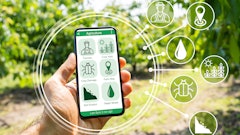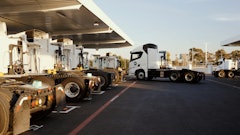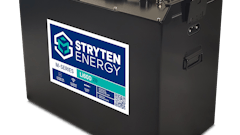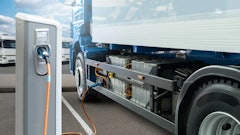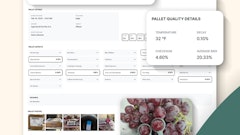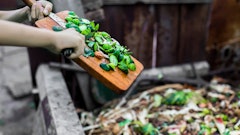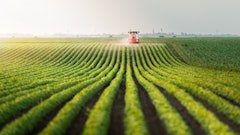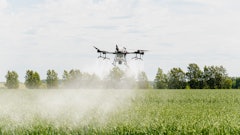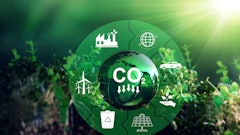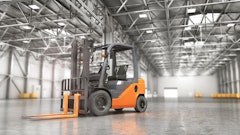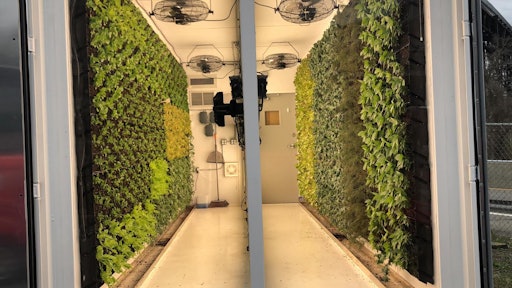
How brands act in response to the Coronavirus disease (COVID-19) pandemic is something that will shape perceptions amongst consumers for the long-term, according to a report released by FMCG Gurus. This is because in times of uncertainty, consumers pay closer attention to the practices and policies of brands.
Enforcing a sustainable supply chain is no exception.
“If we are to maintain a planet [that] is an inhabitable planet and avoid irreversible climate change, biodiversity loss and public health breakdowns, all food systems will need to adhere to the principles of sustainability, minimizing their emissions, applying the principles of the circular economy and working in harmony with nature,” says Patrick Holden, founder and chief executive of Sustainable Food Trust. “This will mean progressively eliminating chemical inputs and sourcing sustainably produced raw materials.”
“The primary purpose of food production should not be merely to satisfy a market need, but to promote the health and the vitality of the people who eat it. To achieve this, all food products must not only be safe and free of undesirable ingredients, including pesticides and harmful additives, but also processed in such a way that their nutritional integrity is not compromised,” adds Holden.
“The COVID-19 pandemic has provided us with a vital new insight about the relationship between food quality and public health, namely that all diseases, including the Coronavirus, are an indication of an imbalance in the ecosystem, in other words, nature’s way of rebalancing an organism or population [that] is not living in equilibrium with its external environment. The avoidance of future pandemics or minimizing their destructive impact will best be achieved through an understanding that health is not merely the absence of disease, but a vital state [that] is the consequence of the organism, whether it be plant, animal or person, being correctly nourished and living in harmony with its external environment. Pests, parasites and diseases, including those of a viral nature, need to be seen as nature’s way of rebalancing unstable ecosystems,” says Holden.
And, there is no question that the entire supply chain is impacted by COVID-19.
“Traditional farming is being hit particularly hard by the forced shutdown of key customers, including schools and restaurants. In fact, farms are dumping supply, and yet food banks have more demand than ever, and you see grocery stores are regularly out of stock. There is a surplus of food, but it is not being matched with the demand. We need to rethink our fresh food supply chain to have the flexibility and optionality to adapt to changing demand,” says Carmela Cugini, executive vice president sales, Bowery Farming.
For instance, adapting to changing demand involves additional planning to create food supply for the growing population. It requires companies to use indoor farming to offset the lack of arable land, Cugini says. It’s about finding new ways to limit food waste, water usage and pesticides.
“I think now, more than ever, vertical farms, like Bowery, have a greater responsibility to ensure shelves are stocked and retailers are able to meet consumer demand,” she says. “Since produce is fresh supply, it is not something that can be created overnight. Couple that with limited shelf life, and the logistics of increasing produce supply to meet the recent influx in consumer demand becomes further complicated.”
Meanwhile, consolidation in the industry, especially in the U.S. meat industry, remains a hot-button issue during the pandemic.
“It is one of the main reasons we’re experiencing such extreme impact on the food supply chain here in the United States,” says Daniel Malechuk, chief executive officer, Kalera. “If we look to other countries, such as countries in Europe, we see that they aren’t experiencing any of these supply chain issues because they have a far less consolidated food industry. Regionalizing our supply chains should be a major goal in the coming years, so we do not have to revisit these issues. And, vertical farms located within cities is an obvious part of the solution.”
That’s why Kalera situates its indoor farming facilities right where the demand is.
“[This] means we can supply an abundance of produce locally, eliminating the need to travel long distances when shipping perishable products,” says Malechuk. “We absolutely see this ability to ‘go local’ and reduce carbon footprints as the future for many companies.”
Kalera also announced plans to open a new state-of-the-art growing facility in Atlanta in early 2021, which comes on the heels of Kalera opening its second Orlando, Fla., farm.
“Our farms are situated right where the demand is—in cities—which means we eliminate trucking inefficiencies and thus are able to reduce our carbon footprint,” adds Malechuk. “This also helps to streamline the supply chain, something that we know is of increasing importance.”
And, because transportation costs, water resources, packaging and more are just a part of a large-scale distribution system, vertical farming companies like Vertical Field can situate portable urban farms anywhere.
“Vertical Field’s portable urban farms can be positioned in a parking lot or on the roof of any building or commercial site, including restaurants, grocery stores, hotels and more,” says Guy Elitzur, chief executive officer of Vertical Field. “There is no need for transportation cost, heavy machinery or any logistic cost. The produce can be grown and sold at the same location with no need to be trucked, shipped or flown from remote locations. A shorter supply chain will increase effective shelf life, especially for baby/micro greens.”
Upcycled food companies, on the other hand, helped to prevent at least 8 million pounds of food waste in 2019, according to a survey presented by Upcycled Food Association.
“As usual, the biggest challenge is a mirror image of the greatest opportunity. As a food business, you’re in a good position to make a big impact,” says Turner Wyatt, chief executive officer of Upcycled Food Association. “It’s not just the environmental impact either. Food waste is economic loss. Simple as that. Every food business has at least a little food that goes to waste. For the sake of example, let’s say it’s 10%. If an employee at your company was blatantly slacking off for 10% of his time, he would get fired. If the entire workforce did the same, it would destroy the bottom line. If you wouldn’t accept 10% of your workforce going to waste, why accept 10% of your food inventory going to waste? One hundred percent of the food that comes into your business has value. Treat it that way by finding ways to upcycle the previously wasted nutrients and elevating your entire inventory to its highest and best use.”
Sustainable solutions
Finding new ways to limit food waste is a big opportunity in today’s supply chains, according to Cugini.
That’s why Bowery developed BoweryOS, a proprietary software system that uses automation and machine learning to continuously monitor plants and administer the right amount of resources—nothing more, and nothing less.
“We’re currently utilizing our proprietary BoweryOS technology to lean in at the request of retailers and ramp up production to help keep store shelves stocked, while minimizing food waste,” says Cuigini.
Vertical Field developed a soil-based (geoponic) system for urban farming in any indoor or outdoor space.
“The technology allows consistent product supply without seasonality constraints and with 90% less water usage,” says Elitzur. “We use an advanced LED lighting technology to provide our plants the light intensity and color they need to grow and develop. Our fast plant growth cycle provides a frequent and regular supply of agricultural produce year-long for urban environments and smart cities. This growing platform allows a complete control over moisture, sunlight and temperature. The system’s solution allows for growing the desired crops, any place in the world, regardless of climate or soil conditions.”
While most indoor vertical farms use hydroponic growing systems, Vertical Field delivers a unique, geoponic vertical growing platform that is different than the hydroponic standard.
“It’s a proprietary internal system that creates optimal growing conditions. Geoponic or soil-based vertical farming embraces the real soil as a natural barrier by keeping plants in their original environment in order to create optimal growing conditions. On top of it all, the concept of using a geoponic solution supports our values of keeping plants in their original environment and utilizing natural values in our lives. We are working to fulfill the demand for healthy, fresh and pesticide-free products and to lower companies’ environmental footprint,” says Elitzur.
Likewise, achieving forecasting excellence is a journey of continuous improvement, says Are Traasdahl, co-founder and CEO of Crisp Inc.
"It starts with designing processes and systems that make it easier to collect, structure and utilize existing information in easy-to-use solutions. As the journey progresses, it becomes possible to deploy even more advanced inputs and technologies. There are many benefits of a best-in-class, cloud-based forecasting platform that leverages AI/ML. Such a platform can easily integrate with other systems and capabilities, drive improved master data management, help optimize pricing and promotion strategies and illuminate and quantify new growth opportunities. By beginning with a more accurate picture of the end in mind, food companies, especially those operating in fresh and perishable categories, can accelerate business processes and operating improvements that lead to competitive advantage," says Traasdahl.
As a result, Crisp will be adding an inventory planning module to its platform this summer to help demand planners and production staff easily see the inventory level for each SKU.
"Essentially these features will give customers better insight about ‘when’ to order or start ‘how much’ production on ‘which’ products," adds Traasdahl.
Advances in lighting and automation technology also help shape the future of indoor vertical farming. Investors continue to respond enthusiastically to vertical farming, with the sector raising over $1 billion in funding since 2015, as outlined in a recent IDTechEx study.
“While agriculture production currently accounts for almost a quarter of global, human-induced greenhouse gas emissions, the agriculture sector has the unique ability to be part of the climate solution,” according to the World Wildlife Fund’s website. “The Agriculture Resilience Act is an important and commendable effort to more comprehensively address the climate crisis though agricultural solutions. This bill attempts to leverage a range of programs and incentives that support win-win outcomes for producers and for nature, and sets a new level of ambition for the role of U.S. agriculture in responding to climate change.”
Leading Harvest’s Farmland Management Standard is said to be the first industry-wide agricultural sustainability standard, meaning producers have the opportunity to utilize a standard in conjunction with other metrics, as well as apply it across diverse growing operations and in vastly different region, according to Kenny Fahey, interim executive director at Leading Harvest.
“Never has there been a moment in modern history when consumers, universally, have had such a heightened interest in the safety of their food--from fields to market,” he adds. “At the same time, a sea change is occurring across the agricultural landscape that will determine how farmers produce food for generations to come. This transformation is being driven not only by increasingly engaged consumers, but also by retailers, food brands and investors demanding greater transparency and assurance that farmland is being managed sustainably. The future of food supply chains revolves around meeting consumer demand for sustainably sourced fresh food.”
Additionally, ArrowStream’s supply chain technology for the foodservice industry monitors inventory levels, consolidates freight lanes and maximizes truck loads across the supply chain.
“COVID-19 has shown the vulnerability and the resolve of the U.S. foodservice supply chain plant closures, declining margins for farmers, foodservice distributors and restaurants,” says David Maloni, executive vice president of analytics for ArrowStream. “Opening the supply chain will be much harder than shutting it down, and the consumer will be key. Those within the U.S. foodservice supply chain who have pivoted successfully have had access to data, such as technology-driven data to bring visibility into the supply chain. This has fueled unprecedented collaboration within the various segments to adjust from burdensome inventories to shortages. And, it’s the data and collaboration driven by technology that will be crucial in bringing the foodservice supply chain back.”
As part of the company’s COVID-19 commitment, it released Inventory QuickStart, developed to help restaurant operators stay on top of inventory challenges and protect their brand.
“Specifically, it enables operators to manage supply shortages, track product substitutions and plan for re-opening stores,” says Maloni. “Operators have instant access to data on product movement across the supply chain and configurable exception-based analysis, allowing them to see and address the issues that need immediate attention.”
For its part, ORBIS’ reusable packaging not only provides reliable, efficient solutions for retail supply chains, but it can also be manufactured, used, re-used and reprocessed without impacting the solid waste stream.
“Using ISO 14040 life-cycle assessment (LCA) methodology, ORBIS worked with Franklin Associates to create an LCA model that compares packaging solutions in three environmental areas—carbon emissions, BTUs and solid waste. This comparative model provides users environmental metrics, so that they can improve their decision-making process,” says Breanna Herbert, associate product manager and sustainability lead at ORBIS Corp. “We offer sustainability audits, where we analyze a customer’s packaging program, compare packaging options and calculate the environmental impacts. We take into consideration the entire lifecycle of the packaging to provide an unbiased recommendation. One example includes a 3,000 plastic pallet program, converting from single-use wood pallets. With assumptions of six trips a year and 300-mile trip distance, a user could reduce solid waste up to 72%, greenhouse gas emissions by 3.2% and energy usage up to 71%.”
ORBIS also looks for new and innovative materials to drive packaging performance and sustainability.
“Examples include x-ray and metal-detectable pallet materials. These pallets are molded with a unique proprietary blend of detectable materials. In the instance that any piece of the pallet comes loose due to aggressive handling, it will be easily detected. This allows plants to use fully hygienic pallets throughout their internal processing facility, and when loads are off-loaded to outbound shipping pallets, they can then be sent through metal detectors for inspection,” says Herbert. “By design, reusable packaging can be fully recycled and used in other useful products at the end of its service life. ORBIS also offers a comprehensive recycling program, Recycle with ORBIS, for the efficient recovery of obsolete and surplus packaging. This enables reusable packaging products to be recovered, recycled and reprocessed into new product. When compared with one-time use or disposable packaging, the reusability and recyclability of ORBIS pallets and containers enables significant ‘source reduction.’”
Whether it’s vertical farming, waste reduction or supply chain software optimization, sustainable food chains continue to thrive amid the COVID-19 global pandemic.
“COVID-19 has been a wake-up call, reminding us of the fragility of our food supply system,” says Holden. “Shorter and more transparent supply chains are better for the consumer and the producer, so we hope that these alternative routes to market will flourish in parallel with the existing supermarket trade.”
The pandemic also reminds companies that corporate social responsibility is paramount during times of crisis.
“Sustainability is part of that, and operating with the environment in mind makes all of us better corporate citizens,” says Bob Klimko, director of market development for ORBIS. “A crisis like this really sheds light on the supply chain, to which the consumer does not always have visibility. It gives supply chain professionals an opportunity to shine and get product from manufacturers to retail so the consumer’s basic needs are met. It truly shows how critical the supply chain is to today’s global economy. As distribution and volume spiked during the outbreak, there were countless examples of how companies stepped up and distributed and supplied needed product. Others pivoted and re-tooled to produce essential products like hand sanitizer. That type of agility is only possible with an efficient supply chain.”



